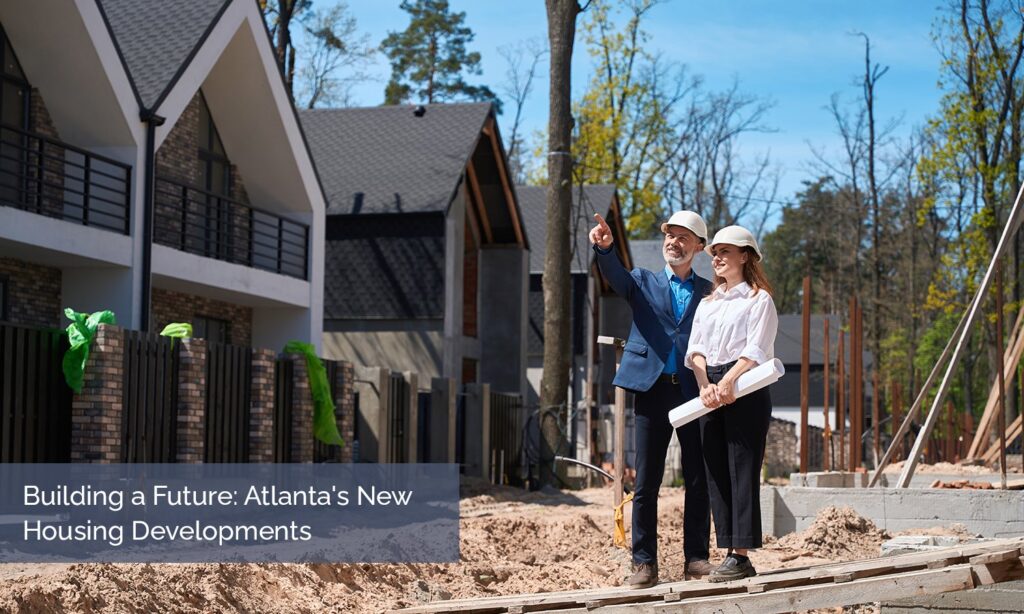Without a doubt, the construction industry is rapidly evolving. In late 2023, we witnessed numerous technological advancements in this sector, and in the first half of 2024, we can anticipate similar progress, with additional advancements in residential construction in Atlanta. Also, the rising prices of materials and the high costs of homes are propelling the construction market to new heights of investment. There’s a lot more to learn about the trends that are prominently shaping the construction industry. Keep reading this post to gain more insights into these emerging trends.
The Rise of Sustainable Building Practices
Sustainable building practices are no longer just a fad. They are becoming an essential element of residential construction in Atlanta. Builders are now more inclined towards using eco-friendly materials, and energy-efficient designs, and are seeking green certifications. Moreover, the demand for materials with a lower environmental impact is one of the driving forces behind this shift. Builders are exploring unconventional construction methods, such as recycled steel and bamboo flooring, to reduce their carbon footprint.
Moreover, energy efficiency is also taking center stage. Solar panels, energy-efficient appliances, and smart home systems are becoming standard features in new homes. Consequently, it makes sustainable living more accessible and attractive. The trend towards sustainable building is a conscious effort to build homes that are environmentally responsible and will stand the test of time.
Smart Home Integration in Modern Residences
The integration of smart technologies in residential construction is revolutionizing the way we live and interact with our living spaces. Moreover, smart home features are no longer exclusive to the tech-savvy. They are becoming increasingly common, improving the overall functionality and efficiency of homes across the US. With smart security systems, homeowners can remotely monitor their property, and instantly receive alerts, ensuring the safety of their loved ones and personal belongings.
As technology advances, we can expect even more seamless integration of smart features into our homes. The future of residential construction involves creating living spaces that cater to our needs and make our lives easier and more delightful.
Adapting to Changing Demographics and Lifestyles
The American dream of owning a perfect house with a white picket fence and a two-car garage is changing. Residential construction is adapting to meet the diverse needs of modern families. Builders are embracing flexibility and innovation in their designs to cater to the rising demand for multi-generational living spaces. This trend is giving rise to homes with separate living spaces that ensure privacy and comfort for every generation under one roof.
Moreover, the increase in remote work has transformed how we view and utilize our living spaces. Builders are incorporating dedicated home office spaces to provide a conducive environment for work without compromising on style and functionality.
Also, flexible layouts are gaining popularity, allowing homeowners to adapt their homes to different activities and occasions. From open-concept designs to movable walls, residential construction is adopting the concept of fluid living spaces.
The Influence of the COVID-19 Pandemic on Home Design
The COVID-19 pandemic has left a significant impact on residential construction. It has influenced architectural designs and shifted our priorities. With remote work becoming more common, homeowners are seeking dedicated spaces for productivity and focus. They are incorporating spare rooms, nooks under the stairs, and backyard offices into their home designs. Additionally, homeowners are investing in features such as air purification systems and dedicated exercise spaces. The kitchen, once the heart of the home, is now also a hub for nutritious cooking and wellness activities.
The pandemic has accelerated the trend towards touchless technologies and antimicrobial surfaces, resulting in homes that prioritize hygiene and safety. Builders and homeowners alike are now prioritizing the creation of spaces that offer a sense of security and well-being, making it a top priority in home design.
Affordable Housing Solutions and Innovative Financing
The USA is currently facing a crisis of housing affordability, but the construction industry is working on innovative solutions and financing options to address this issue. One such solution is modular construction, which involves building sections of a home off-site and assembling them onsite. This method reduces construction time and lowers costs, for more people to become homeowners. Also, modular homes are customizable and energy-efficient.
Stakeholders are collaborating through public-private partnerships and community land trusts to create housing solutions that cater to the needs of low- and middle-income families. These initiatives prioritize long-term affordability and community development.
Resilient Construction in the Face of Climate Change
Resilient construction methods involve using sturdy materials and techniques that can withstand extreme weather conditions, ranging from hurricanes to wildfires. Impact-resistant windows, reinforced structures, and elevated foundations are becoming standard features in homes built in vulnerable regions.
Furthermore, sustainable landscaping is becoming more popular. Homeowners and builders recognize the importance of green spaces that can absorb excess water and provide natural insulation. From green roofs to permeable pavements, landscaping is becoming an essential part of resilient home design.
Also, to find out more about real estate construction in Atlanta, visit here for related post.
Conclusion
Lastly, with the latest emerging trends in the residential construction industry, businesses must keep up with the latest advancements. That’s how they can stay competitive and informed without sacrificing the quality of their projects.




